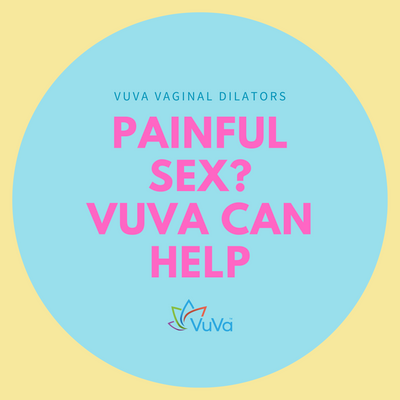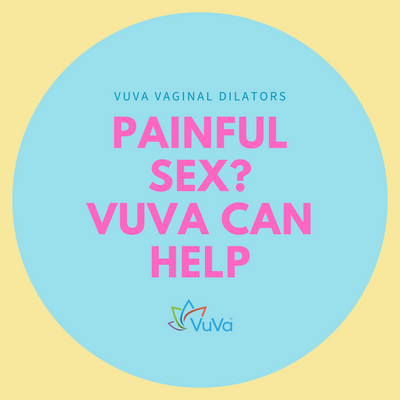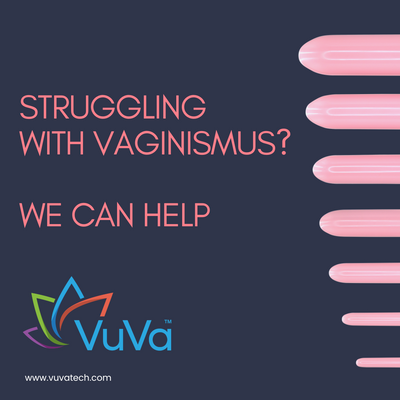
| Tara Langdale
When Your Tampon Won't Go In, What’s Going on?
Menstruation is not one of the most pleasant things we deal with. You can ask any woman around. The majority will tell you how inconvenient it is when you reach that time of the month. For millions of women, menstruation can be painful, and that is in addition to the PMS they experience, like bloat, cravings, nausea, and lethargy.
And sometimes, for some, even inserting tampons can be tougher than it seems. So why does this happen?
When a tampon causes pain upon insertion into the vagina, it can indicate that there could be something further going on that needs to be addressed, whether it be by pelvic floor physical therapy or a medical professional. You should not force the tampon because it can aggravate the pain or cause further injuries to your vaginal opening and tissues.

There can be several causes to why your tampon feels like it is hitting a wall or is causing you pain. The best thing to do is to consult your OB-GYN. Additionally, learning about the different conditions that can cause this pain will help you understand what is happening so you can take action.
Sexual and reproductive health is not always widely discussed, so it can seem there is limited information on the matters of vaginal tightness. You need to speak about this with your doctor so they can help you. You also need to have exams in the future with a speculum. If inserting a tampon hurts now, this might be difficult so treatment is key for your future sexual health.
Here is everything you need to know about vaginal tightness and what to do about it:
What's the deal?
Several factors can cause you to feel like your tampon is hitting a wall or will not go inside the vagina. We will go over them in this article. Most often, it is associated with vaginal tightness.

If you have experienced this for the first time, it is recommended not to keep pushing the tampon inside. That will just cause pain, and you will still feel like the tampon is hitting something inside your vagina whenever you push.
In addition, it can make the problem worse.
Why am I tight down there?
The vagina is made up of elastic tissues and muscles. When it becomes too tight, it can indicate that you are having muscle spasms down there.
Yes, muscle spasms can happen in the vagina and the pelvic floor muscles. The causes may vary, but it can be an effect of any of the following:
- Vaginismus - (International Society of Sexual Medicine) You can develop Vaginismus at any time, at a young age or at a mature age. This is the involuntary contraction of the vaginal muscles. This can be caused by a hypertonic pelvic floor, tight pelvic floor muscles, past sexual trauma or sexual anxiety. This is very treatable. You do not want to delay treatment as it can make your condition much worse.
- Vaginal childbirth - After giving birth, the body will experience major changes; the pelvic floor and the vagina can undergo extreme pressure; hence the vaginal muscles may not tighten or relax as before.
- Episiotomy (perineal cut) (John Hopkins Medicine. (n.d.). What is an episiotomy?) This is an incision in the perineum or the tissue between the vaginal opening and the anus. This cut could impact the muscles in the area leading to future issues.
- High-impact exercise or activity - Extreme exercise or activities that involve a lot of movement for the lower body may affect the pelvic muscles and the vagina. Athletes can develop tight pelvic floor muscles and Vaginismus, which can be treated with pelvic floor physical therapy.
- Surgery - If you underwent surgery in or near your vagina, you might experience pain and spasms in the pelvic and vaginal area.
- Other medical issues - Some medical conditions, like endometriosis, vulvodynia, vaginal stenosis can cause tightness. It is best to confirm if you have one or more of these conditions with a doctor and seek their advice on how to address it.

Why is my tampon suddenly uncomfortable?
For first-time users, tampons can be a little uncomfortable and can require a bit of getting used to. However, if you have been using tampons regularly and suddenly feel discomfort or pain, you should know that is not normal and should seek advice from your medical provider.
Vaginal discomfort can be caused by the dryness of the tampons or the vagina during the late phases of menstruation. A cause of this can be lack of lubrication due to hormonal imbalance, menopause, or infections.
In this case, you can try to use lubricants or vaginal moisturizers. You can also ask your doctor's advice if estrogen hormones/therapy is needed. Creating blood flow to the area is key to creating natural lubrication.
Otherwise, if the discomfort is associated with a stabbing pain, it may be because your vagina is too tight or a pelvic pain condition. A vagina that seems “too-tight” can be associated with your pelvic floor muscles tightening, or continual tightness due to a hypertonic pelvic floor, which a pelvic floor physical therapist can help you loosen.

Why does my tampon not go in?
If you feel anxiety or have a negative association with penetration, your pelvic muscle can have a tightening reaction to the first sign of any penetrating object. With this, it will be difficult and painful to make a tampon go inside. For some instances, it may seem like your vagina and hymen are closed.
If you experience the same problem during intercourse or even with sex toys, it is can be that the tightness has something to do with your nervous system. Do not worry, this can be treated.
A tight vagina can be associated with vaginismus. Vaginismus is a medical condition where vaginal muscles will tighten involuntarily, causing spasms and pain. If you have this, a tampon would be very hard to insert.
What causes vaginismus?
Many women may not be aware that vaginismus has been causing them vaginal pain or difficulty with tampon insertion or intercourse. This is because there are limited resources about it.
In medical terms, vaginismus is called Genito-Pelvic Pain/Penetration Disorder (GPPPD), (International Society of Sexual Medicine) which is a condition that can range from mild to severe.
There are two types of vaginismus: Primary and Secondary. Primary Vaginismus is often experienced when having sex or inserting tampons for the first time due to the anxiety around performing those acts.
The secondary type of vaginismus is unexplained ongoing tightness and discomfort. This type of vaginismus can be triggered by a temporary physical pelvic medical condition, pelvic pain issues, and trauma. Secondary Vaginismus is caused from the fear or pain caused by another pelvic pain condition or past trauma.

Ongoing tightness and discomfort include urinary tract and other pelvic infections, childbirth, a decrease in lubrication due to menopause, surgery, or a long pause from having sex or traumatic experiences like assault and rape.
How can I fix tight pelvic floor or vaginal muscles?
If you often have a painful and challenging experience when inserting your tampon, and you suspect you have vaginismus, the best way to confirm your suspicions is to consult with your doctor for their advice and guidance. Sometimes they are not educated enough about this topic. You can find a pelvic floor physical therapist that will be able to treat your pelvic pain conditions as you need therapy. A good doctor should refer you to a pelvic floor physical therapist and recommend vaginal dilators.
The good news is that vaginismus is highly treatable, and women can recover from it. There are ways to ease the pain, and there are treatment options, including pelvic floor therapy, home dilator treatments and relaxation techniques, that can ease and gradually eliminate vaginismus. Most treatments will not require drugs or complex surgeries and procedures. Do not do surgery, this is not needed in most all Vaginismus cases.
4 methods to ease vagina discomfort
Using alternative feminine products
If your main problem is that your tampon is hitting a wall, try using other products like sanitary napkins. They will require no penetration, and you can use them until you can get treatment for internal matters.
Trying smaller tampons with an smaller applicator
Some women just prefer using tampons to sanitary napkins. If you are one of them, you can try adjusting the size of your tampon and using a smaller applicator. You can also apply lubricant to make the insertion process easier. However, if it is still painful, do not push it as this can cause damage.
Do NOT do Kegel Exercises
Kegel exercise (Pelvic Health Centre. (2020).) is done by contracting and releasing the pelvic muscle in series. Doing kegel exercises about three times a day can benefit the uterus, bladder, and bowel but actually be VERY harmful if you have a hypertonic pelvic floor. Doing kegels tense up muscles in your pelvic floor that are already tense, and this can make your condition worse. Do not do kegels, we repeat, do not do kegels unless this is part of a treatment plan from a pelvic floor physical therapist.
Using a vaginal dilator
A vaginal dilator is a cylindrical rod made from non-toxic materials designed for insertion into the vagina. Vaginal dilators are smaller and can be inserted into the vagina easier than tampons. Vaginal dilators also come in a range of sizes for all types sizes of vaginal canals.
A vaginal dilator is an excellent option to slowly and gradually let your vagina get used to penetration. For young girls or women who are just discovering dilators, one good piece of advice is to try the Vaginismus Neodymium Dilator Starter Kit, which includes instructions on using it properly. You can find several vaginal dilator products on the VuVatech website, and choose the one that is right for you.
Do vaginal dilators really help?
In many cases, vaginal dilators have helped ease and treat vaginismus and vaginal stenosis. They have helped increase blood flow, improve pelvic conditions, and made the insertion of tampons easier. Dilators can also help relax vaginal muscles and improve comfort. It can even help improve your sex life.
Bottom Line: Your Tampons Should Not Feel Uncomfortable
When you feel the simplest discomfort, pain, or tightness when inserting a tampon, you should consider consulting a doctor or specialists like an OB-GYN or pelvic floor physical therapist to get the proper care and treatment.
Female reproductive health is not talked about enough in today's society; hence many people are unaware of the serious pelvic floor conditions women can face. Experiencing painful tampon insertion or painful penis penetration during intercourse is not normal, and you should be concerned about it. The good news is that it is very treatable.
VuVa Helpful Links:
How do Neodymium Vaginal Dilators work?
7 Reasons for a Tight Vagina and How to Loosen
How to Relax Vaginal Muscles, Vaginismus & Sex
Vaginal Stretching - Keeping in Shape with Dilators
Do Dilators Really Work? Yes, and They can Improve Your Sex Life!
Shop for VuVa Vaginal Dilators
Resources
International Society of Sexual Medicine. (n.d.). What is genito-pelvic pain/penetration disorder (GPPPD)? https://www.issm.info. Retrieved June 28, 2021, from https://www.issm.info/sexual-health-qa/what-is-genito-pelvic-pain-penetration-disorder-gpppd/
John Hopkins Medicine. (n.d.). What is an episiotomy? https://www.hopkinsmedicine.org/. retrieved June 28, 2021, from https://www.hopkinsmedicine.org/health/treatment-tests-and-therapies/episiotomy
Pelvic Health Centre. (2020). TO KEGEL OR NOT TO KEGEL? www.proactiveph.com. retrieved June 28, 2021, from https://www.proactiveph.com/blog/to-kegel-or-not-to-kegel/

















